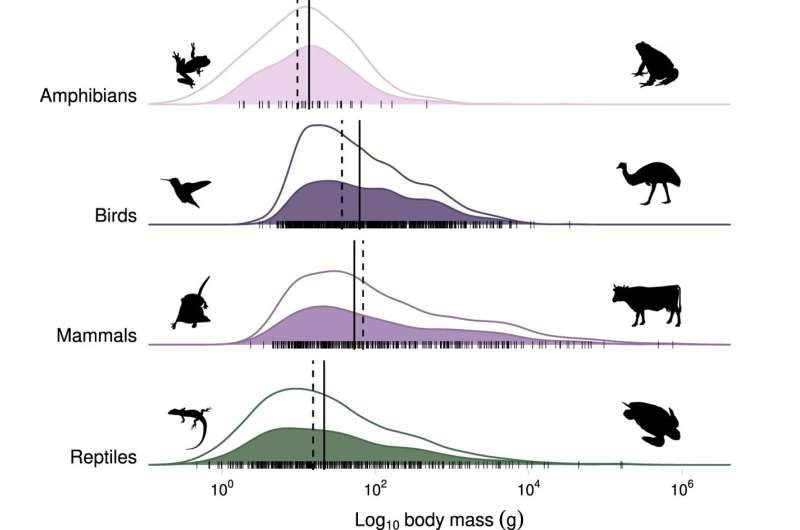December 13, 2023 report
This article has been reviewed according to Science X's editorial process and policies. Editors have highlighted the following attributes while ensuring the content's credibility:
fact-checked
peer-reviewed publication
trusted source
proofread
Global assessment of free-ranging cats shows they eat more types of creatures than previously thought

A small team of environmental and wildlife specialists from the U.S., France, Australia and New Zealand has found via study of prior research efforts that cats eat a wider variety of other creatures than previously known.
In their study, reported in the journal Nature Communications, the group compiled a database of cat-consumed wildlife using data from other research efforts involved in studying the impact of free-ranging cats on wildlife ecosystems.
A lot of research has investigated the damage caused to ecosystems by free-ranging cats—those that are not owned by anyone, or that are allowed by owners to roam free—much of it surrounding the types and numbers of birds killed by the felines. But, as the researchers note, little has been done to merge the data from such efforts to gain a global perspective on the eating habits of free-ranging cats.
To address that deficiency, the team analyzed data from every major source regarding studies of free-ranging cat behavior and added information about the wildlife they eat to a database to create a global report.
After adding as much data as they could find within their constrained time period, the research team ran some searches. They found cats eating 981 kinds of birds, 463 types of reptiles, 199 kinds of insects and 57 species of amphibians. They summed up their findings by suggesting that cats worldwide are eating pretty much anything that they are able to catch and kill, ranging from rats and mice to snakes and frogs, spiders, and of course, birds—many, many birds.
The researchers also found cats eating many types of animals that are on an endangered list—they were found to be eating green sea turtles, for example, and the western quoll. They were also found to be eating some that are considered critically endangered, such as Newell's shearwater, and some that have gone extinct, such as Stephens Island Rockwrens.
The team concludes that cats are extreme generalist predators and that more work is required to protect many of the species cats are endangering.
More information: Christopher A. Lepczyk et al, A global synthesis and assessment of free-ranging domestic cat diet, Nature Communications (2023). DOI: 10.1038/s41467-023-42766-6
Journal information: Nature Communications
© 2023 Science X Network




















